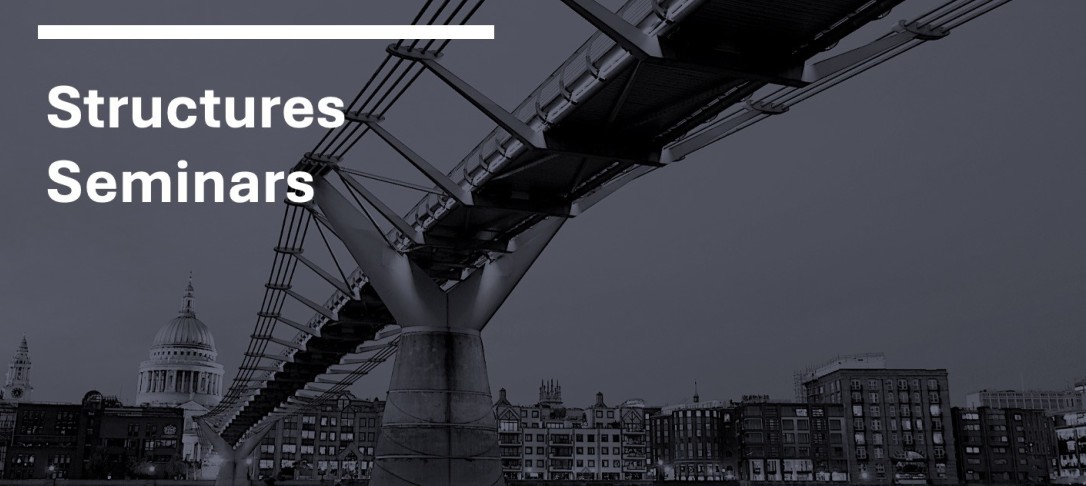
Abstract:
As the level of digitalisation of the built environment increases, the transport network will be equally forced to become an integral and connected part of a wider infrastructure system. Ensuring its correct management and preventing disruptive events is becoming a timely challenge for civil engineers. This consideration is particularly valid for the case of steel bridges which account for 50% of the UK road and regional railway networks. In addition, steel bridges are exposed to low-probability/high-consequence events such as hurricanes, tsunamis, explosions, vehicle impacts, fires, human errors, terrorist attacks and adverse, often aggressive, environments that drastically reduce their life span. Despite this, reliable and objective damage detection methodologies for steel bridges are still embryonic, often depending on visual inspections where judgement can vary critically due to inspector experience, knowledge, and subjectivity.
This talk will discuss these latter efforts, briefly examining work that is being carried out to study, model and quantify the robustness of old riveted railway steel bridges. The talk will focus on a selected case study of a railway bridge built between 1913 and 1915. The bridge structure comprises a series of Pratt type trusses connected by riveted joints. The experimental investigation was designed to employ a scenario-independent approach to: (i) evaluate the structural robustness by progressively damage selected elements, (ii) study the structural behaviour after activating Alternative Load Paths (ALPs), and (iii) establish several practical structural health recommendations to identify early failures and avoid progressive or sudden bridge collapse. Finally, the talk will discuss challenges related to the design of a Fiber Optic (FO) Structural Health Monitoring (SHM) system installed on three riveted railway bridges and the development of advanced high-fidelity computational simulations to examine the structure’s capacity to activate Alternative Load Paths (ALPs) by expanding the considered Damage Scenarios (DSs).
Bio:
 Dr Elisa Bertolesi is Lecturer in Structural Engineering at the Department of Civil and Environmental Engineering at Brunel University London (UK). She obtained her PhD (with Honours) in Architecture, Built Environment & Construction Engineering at the Polytechnic University of Milan (Italy). Dr Bertolesi is a Fellow of the Higher Education Academy, UK (FHEA) and member of the Institution of Civil Engineers (UK), CEng, MICE. Dr. Bertolesi is a full College member of the EPSRC. Her work in recent projects included structural monitoring by means of optical sensors and full-scale experimental testing and advanced numerical modelling of masonry and steel structures and structures subjected to extreme events. She is Managing Editor of the Journal of Construction and Building Materials. She also participated as Guest Editor for the collection “Numerical Modelling Trends for Historical Masonry Structures”, published by Frontiers in Built Environment (Computational Methods in Structural Engineering).
Dr Elisa Bertolesi is Lecturer in Structural Engineering at the Department of Civil and Environmental Engineering at Brunel University London (UK). She obtained her PhD (with Honours) in Architecture, Built Environment & Construction Engineering at the Polytechnic University of Milan (Italy). Dr Bertolesi is a Fellow of the Higher Education Academy, UK (FHEA) and member of the Institution of Civil Engineers (UK), CEng, MICE. Dr. Bertolesi is a full College member of the EPSRC. Her work in recent projects included structural monitoring by means of optical sensors and full-scale experimental testing and advanced numerical modelling of masonry and steel structures and structures subjected to extreme events. She is Managing Editor of the Journal of Construction and Building Materials. She also participated as Guest Editor for the collection “Numerical Modelling Trends for Historical Masonry Structures”, published by Frontiers in Built Environment (Computational Methods in Structural Engineering).
Open to all. Attendees external to Imperial need to register.
Time: 14:00 pm


